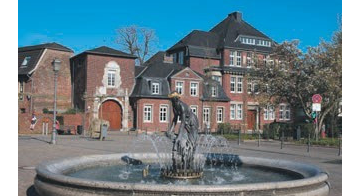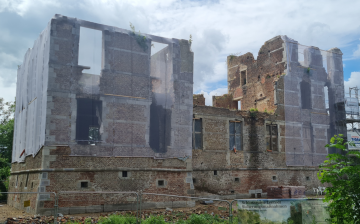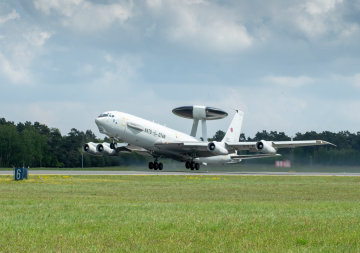A Historic City
Geilenkirchen boasts a nearly thousand-year-old history.

The name Geilenkirchen was first documented in 1170 as "Gelenkirchen." In this document, Philip of Heinsberg, the Archbishop of Cologne (1130 – 1191), confirms the transfer of a portion of tithes from "Gelenkirchen" to the Heinsberg Gangolfus Foundation (a tax-like ten percent levy paid in money or kind).
However, settlements in this area likely existed even earlier, as evidenced by archaeological finds, such as a motte-and-bailey castle near the Wurm crossing at the hospital and unearthed Frankish row graves on what is now the street "An Frankenruh," which have been dated back to the 7th century. Perhaps the legendary Gelo came from the ranks of the Frankish settlers and was the one who built a castle with its own church in Geilenkirchen, giving the settlement its name.
In any case, a permanent castle and a church were established at the site of today's St. Ursula Gymnasium and St. Mariae Himmelfahrt, around which the high medieval settlement of Geilenkirchen developed. This settlement was granted city rights in the late 14th century. Evidence of this is a document dated May 27, 1386, in which the "stede" (cities) Geilenkirchen, Heinsberg, Sittard, and Susteren/NL co-guarantee and cosign a promissory note of the Lord of Heinsberg. Geilenkirchen thus seals the document on an equal footing with the older cities of Heinsberg, Sittard, and Susteren/NL.

For over 150 years, the district administration headquarters was even located in Geilenkirchen. However, as part of the municipal reorganization of the Aachen region in 1972, the district administrative seat was lost. The current city of Geilenkirchen was formed from the previously independent municipalities of Geilenkirchen, Teveren, Immendorf, Süggerath, Beeck, Würm, and Lindern, as well as the villages of Kraudorf, Nirm, Kogenbroich, and Hoven, which were part of the former municipality of Randerath. The loss of the district administration seat and the associated withdrawal of authorities forced the city to take new paths. A restructuring was decided upon, with a particular emphasis on strengthening the service sector. The first comprehensive redevelopment of the town center and village renewal in the 1980s aimed to improve living quality and the residential environment, with the goal of enhancing the overall appeal of the area. In 1986, Geilenkirchen celebrated the 600th anniversary of its city status. In 2011, the 625th city anniversary was commemorated on a smaller scale with events such as the unique exhibition "Geilenkirchener Motive." Numerous historical buildings, including castles, palaces, and patrician houses, still bear witness to a highly interesting city history. The historical past and modern present come together at every turn in Geilenkirchen.

The appeal of this city is especially appreciated by the members of the Bundeswehr and NATO, who get to know Geilenkirchen as soldiers. There is a harmonious coexistence between them and the local population. The NATO Air Base Geilenkirchen was opened in 1953. At that time, the air base was still used by the British Royal Air Force (RAF), which had long-term plans during the Cold War to station itself in northwestern Germany, in the former English sector. The airfield was subsequently handed over to the German Air Force in 1968, before being transferred to NATO in 1980 and becoming the main operating base for the E-3A component.
Following the decline of agriculture, Geilenkirchen experienced significant development as a commercial and residential location in the late 1960s and early 1970s. The city also contributes to international understanding and rapprochement by maintaining friendly relations with neighboring cities in the Dutch-Belgian border area.
Additionally, there has been a partnership with the French city of Quimperlé in Brittany since 1966, which has become deeply rooted in the populations of both cities. Due to their efforts in fostering European integration, the cities of Quimperlé and Geilenkirchen have received numerous prestigious awards, such as the European Flag in 1993 and the European Plaque in 1998.
